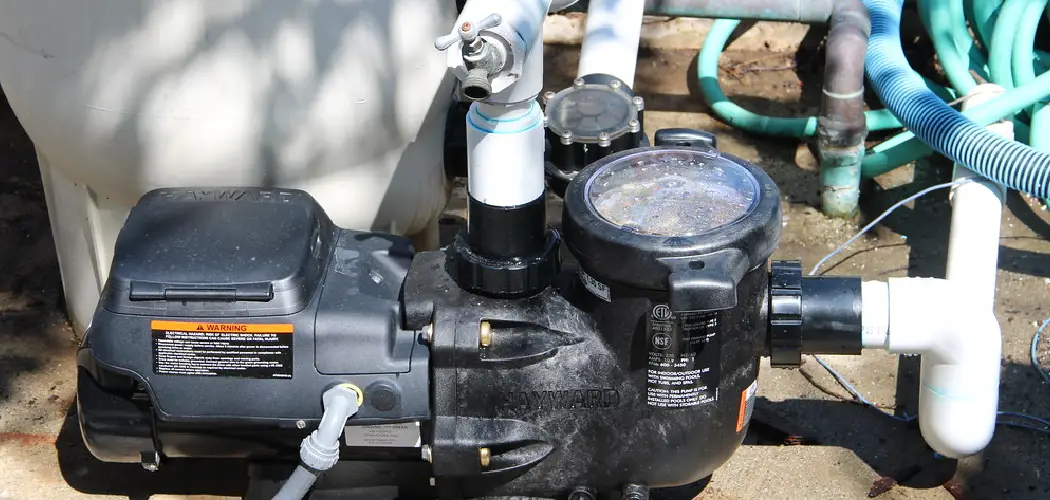Testing your pool pump suction is essential for maintaining a clean and safe swimming environment. A properly functioning pool pump ensures that the water is being circulated and filtered, removing any debris or contaminants that may be present. Without proper testing of the suction, you risk low water flow, which can lead to algae growth and other potential health hazards.
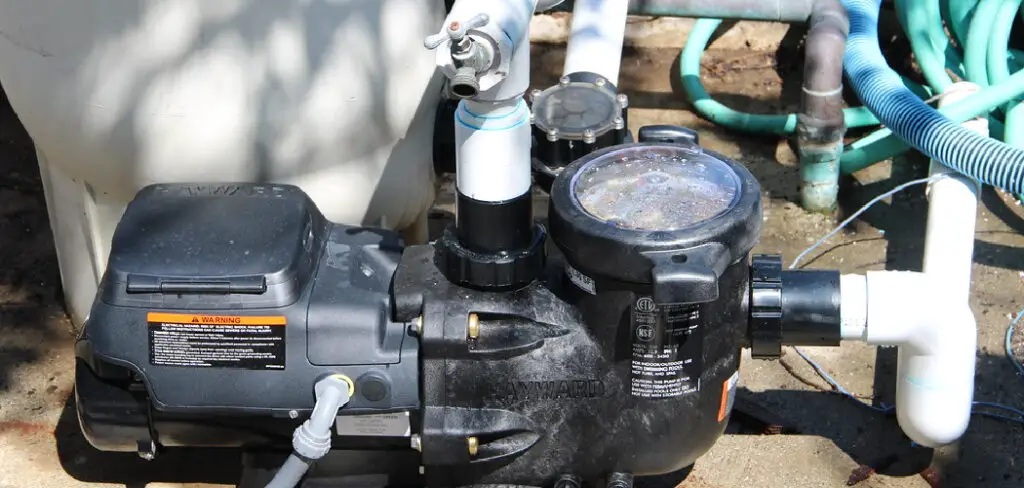
The main advantage of testing pool pump suction is that you can ensure your pool pump is working efficiently. A pool pump with poor suction can lead to many problems, such as cloudy water or low flow rate, which can be both frustrating and time-consuming to fix. In this blog post, You will learn in detail how to test pool pump suction.
Step-by-step Instructions for How to Test Pool Pump Suction
Step 1: Inspect the Pump and Surrounding Area
Check for any visible damage to the pump or its fittings. Look for loose connections, cracks, or signs of wear and tear. Make sure there are no obstructions in the suction line or around the pump. Before working on a pool pump, always make sure that the power is turned off to avoid any accidents. Locate the main power switch or circuit breaker for the pump and turn it off.
Step 2: Close All Valves
Close all suction and discharge valves on the pool pump. This will help isolate the pump from the rest of the pool system, making testing more accurate. Take off the strainer basket lid and check for any debris or obstructions. Clean out the basket if necessary.
Step 3: Check Pump Impeller
Inspect the pump impeller by removing the diffuser or housing cover. Make sure there are no clogs or debris obstructing the flow of water. After completing these initial steps, turn the power back on to the pump.
Step 4: Check Suction Pressure
Using a pool pump gauge, check the suction pressure of the pump. It should typically be between 10-20 psi for most pools. If the suction pressure is not within the recommended range, adjust the valves accordingly to increase or decrease flow. This can help determine if there are any blockages in the suction line.
Step 5: Listen for Abnormal Noises
While the pump is running, listen for any grinding or screeching noises. These could indicate a problem with the bearings or motor and may require further inspection. Next, check the discharge pressure of the pump using a pool pump gauge. This pressure should typically be higher than the suction pressure.
Step 6: Inspect for Leaks
While the pump is running, check for any leaks in the pump or along the suction line. Leaks can reduce efficiency and may need to be repaired. If any issues are found during testing, repeat these steps until the problem is resolved.
If everything checks out, then your pool pump suction is working properly and efficiently. Keep in mind that regular maintenance and testing can help prevent any potential issues with your pool pump in the future.
Safety Tips for How to Test Pool Pump Suction
- Always turn off the pool pump before starting any maintenance or testing procedures.
- Use caution when removing the strainer lid to prevent injury from sharp edges.
- Wear protective gloves and eyewear to avoid contact with chemicals and debris.
- Never operate a pool pump if there is visible damage or signs of wear and tear.
- Keep children and pets away from the pool area while conducting any tests on the pump.
- Avoid leaning over the pool pump while it is running to prevent injury from moving parts.
- Double check that all equipment and tools are unplugged or turned off before beginning the testing process.

Now that you have a few important safety tips in mind, here are some steps to follow for testing your pool pump suction.
What Are Some Signs That Indicate Poor Suction in a Pool Pump?
One of the most common problems with pool pumps is having poor suction. This can significantly affect the efficiency of your pool system, resulting in decreased water circulation and filtration. If left unaddressed, it can also lead to more significant issues such as damage to the pump or even a total shutdown. So how do you know if you have poor suction in your pool pump? Here are a few signs to look out for:
- Weak or no water flow: This is the most obvious sign of poor suction. If you notice that there is little to no water movement in your pool, it could be due to inadequate suction from the pump.
- Air bubbles in the pump basket: Another common sign of poor suction is air bubbles in the pump basket. This indicates that the pump is not pulling in water efficiently, causing air to get trapped and circulated.
- Cloudy or murky water: Poor suction can also result in cloudy or murky water as the pool’s filtration system is not functioning correctly.
- Difficulty maintaining chemical balance: When your pool pump has poor suction, it cannot circulate the chemicals evenly throughout the pool, making it challenging to maintain the proper chemical balance.
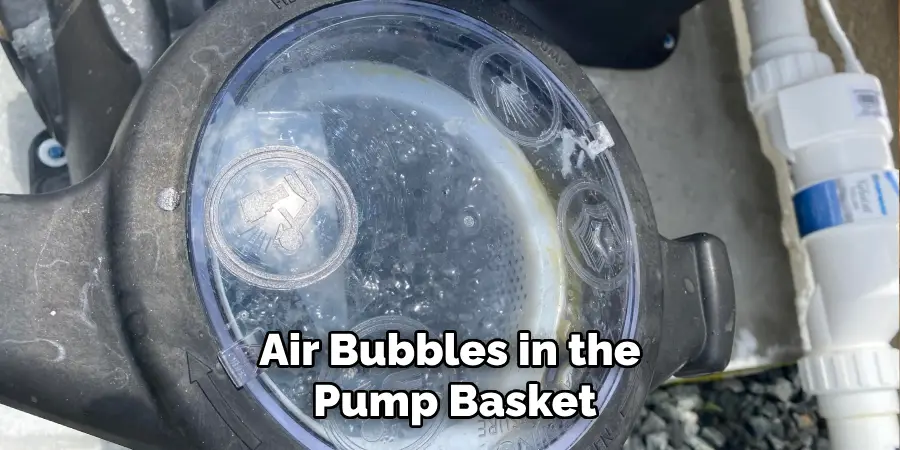
By keeping an eye out for these signs, you can quickly identify if your pool pump has poor suction and take the necessary steps to fix it.
How Often Should You Test Your Pool Pump Suction?
It is recommended to test it at least once a month, especially during the peak swimming season. This will allow you to catch any issues early on and prevent them from becoming bigger problems. Here are the steps you should follow in order to test your pool pump suction:
- Turn off the pool pump – Before testing, make sure to turn off your pool pump and wait for it to completely stop running.
- Check the strainer basket – Remove the strainer basket cover and inspect the basket for any debris or clogs. If there is any, clean it out before proceeding.
- Use a hose to prime the pump – Take a garden hose and fill the pump with water until all air bubbles are gone. This will help ensure accurate suction readings.
- Check the pool skimmer – Make sure the pool skimmer is free of debris and not clogged. If it is, clean it out before proceeding.
- Turn on the pump – Once everything is clear and the pump is primed, turn it back on and let it run for a few minutes.
- Test the suction – Use a vacuum gauge to test the suction by attaching it to the pressure side of the pump. The reading should be between 7-10 PSI.
- Compare readings – If the suction reading is significantly lower than usual, there may be an issue with your pool pump and you should contact a professional for further inspection.
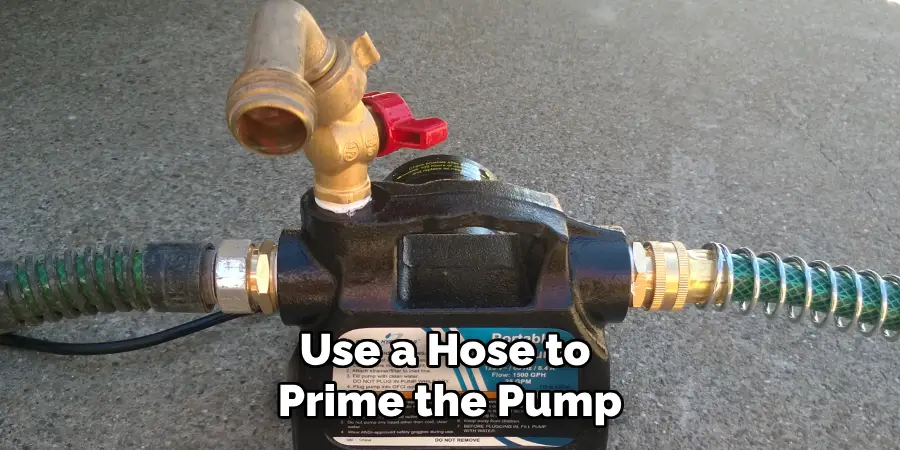
By following these steps, you can ensure that your pool pump suction is working properly and efficiently.
What is the Potential Cause of Weak Suction in a Specific Area of Your Pool?
If you notice weak suction in a specific area of your pool, the potential cause could be a clogged skimmer, blocked lines, or an air leak. A clogged skimmer can happen if debris accumulates and blocks the flow of water into the pump. This will result in weaker suction in that particular area of the pool. Blocked lines can occur if there is a buildup of debris or if there is damage to the lines.
This can also cause uneven suction throughout the pool. Lastly, an air leak in the system can affect suction by introducing air into the system and disrupting water flow. It’s important to regularly check for these potential causes and address them promptly before they lead to bigger issues.
How Can You Prevent Air From Getting Into the System and Affecting Suction?
One of the best ways to prevent air from getting into your pool pump system is by properly maintaining all components. This includes checking for any cracks, leaks, or damage in the pipes, valves, and fittings. It’s also important to regularly clean out the skimmer basket and backwash the filter to ensure proper water flow.
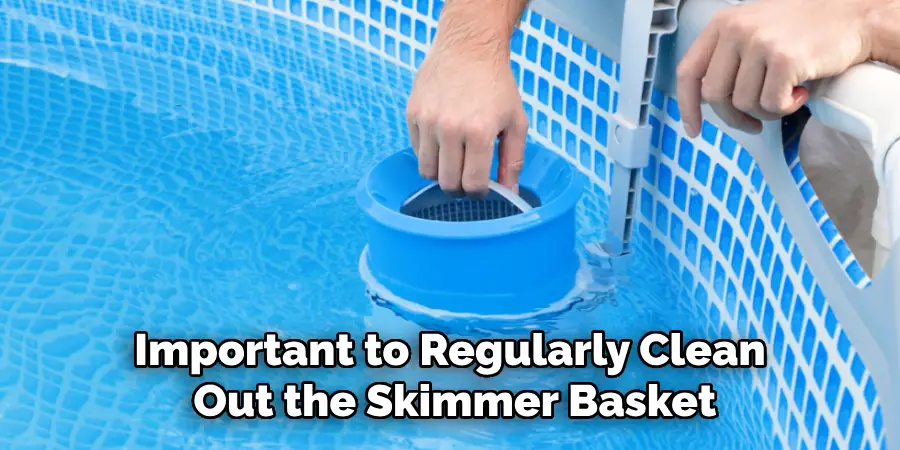
Additionally, make sure to properly close all valves before starting up the pump and regularly check for any potential air leaks. By taking these preventative measures, you can help maintain strong suction in your pool pump system and avoid any potential issues caused by air getting into the system. So remember, regular maintenance is key to keeping your pool pump suction working efficiently.
Conclusion
The main disadvantage of testing pool pump suction is the potential for injury or damage. If you are not careful, you may get injured by the strong suction force and moving parts of the pump. Additionally, incorrect testing methods can also cause damage to the pool pump itself.
In conclusion, it is important to regularly test your pool pump suction to ensure that it is functioning properly.
This not only helps to maintain the cleanliness and clarity of your pool water, but also ensures the longevity of your pool pump. I hope this article has been beneficial for learning how to test pool pump suction. Make Sure the precautionary measures are followed chronologically.
About
Outdoor Fixes is a distinguished figure in the world of Diy design, with a decade of expertise creating innovative and sustainable Diy solutions.
His professional focus lies in merging traditional craftsmanship with modern manufacturing techniques,
fostering designs that are both practical and environmentally conscious. As the author of diy,
outdoorfixes delves into the art and science of outdoorfixes-making, inspiring artisans and industry professionals alike.
Education RMIT University
(Melbourne, Australia) Associate Degree in Design (Outdoor Fixes) Focus on sustainable design, industry-driven projects,
and practical craftsmanship. Gained hands-on experience with traditional and digital manufacturing tools, such as CAD and CNC software.
Nottingham Trent University
(United Kingdom) Bachelor’s in outdoorfixes.com and Product Design (Honors) Specialized in product design with a focus on blending creativity with production
techniques. Participated in industry projects, working with companies like John Lewis and Vitsoe to gain real-world insights.
Publications and Impact
In diy, Outdoor Fixes his insights on indoor design processes, materials, and strategies for efficient production.
His writing bridges the gap between artisan knowledge and modern industry needs, making it a must-read for both budding designers and seasoned professionals.

